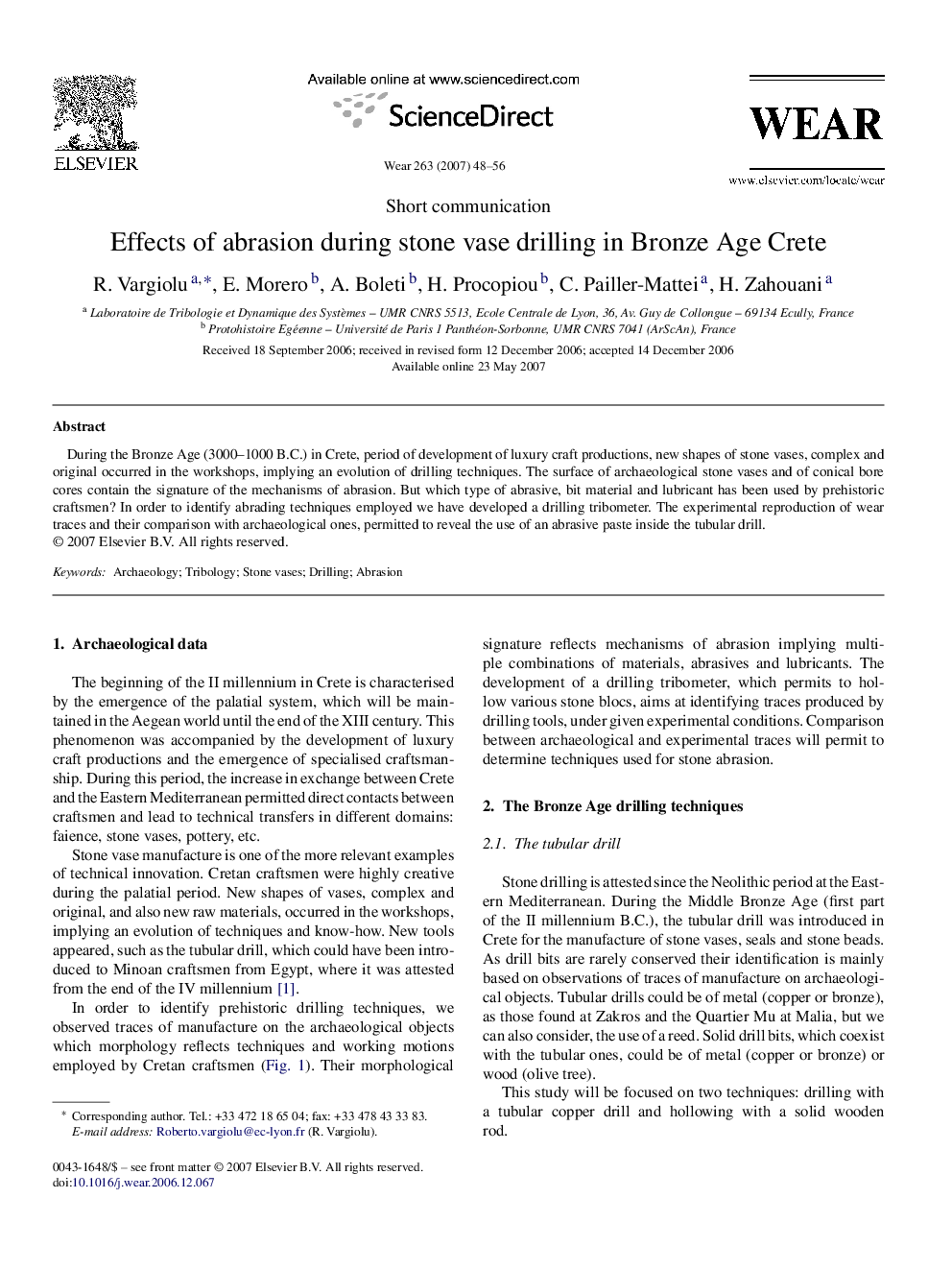| Article ID | Journal | Published Year | Pages | File Type |
|---|---|---|---|---|
| 619798 | Wear | 2007 | 9 Pages |
Abstract
During the Bronze Age (3000-1000 B.C.) in Crete, period of development of luxury craft productions, new shapes of stone vases, complex and original occurred in the workshops, implying an evolution of drilling techniques. The surface of archaeological stone vases and of conical bore cores contain the signature of the mechanisms of abrasion. But which type of abrasive, bit material and lubricant has been used by prehistoric craftsmen? In order to identify abrading techniques employed we have developed a drilling tribometer. The experimental reproduction of wear traces and their comparison with archaeological ones, permitted to reveal the use of an abrasive paste inside the tubular drill.
Keywords
Related Topics
Physical Sciences and Engineering
Chemical Engineering
Colloid and Surface Chemistry
Authors
R. Vargiolu, E. Morero, A. Boleti, H. Procopiou, C. Pailler-Mattei, H. Zahouani,
